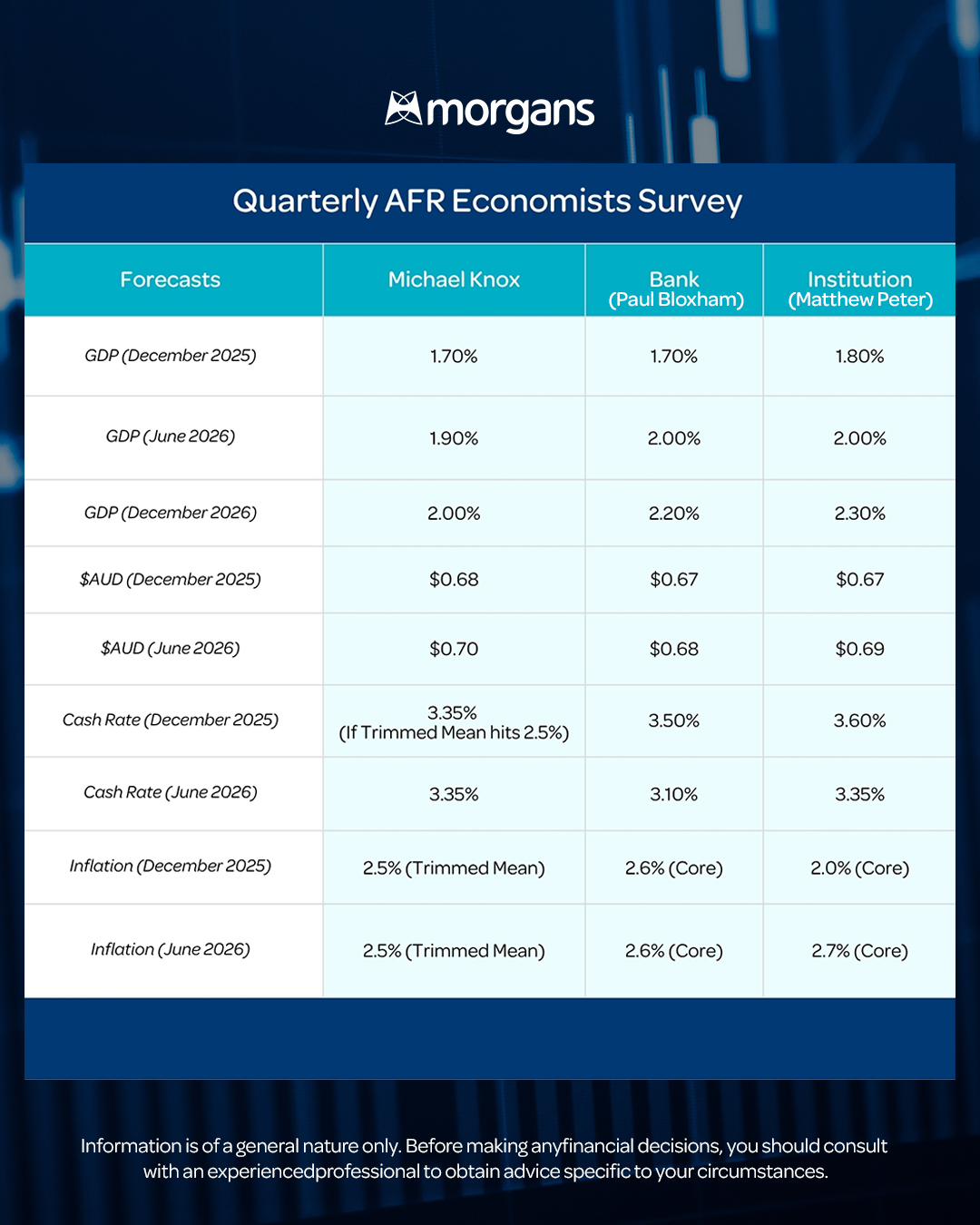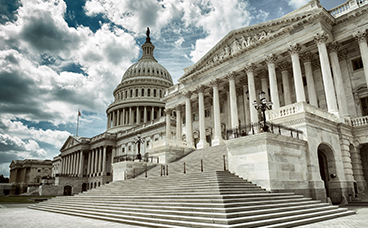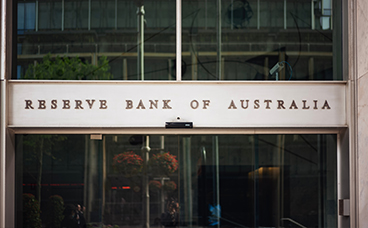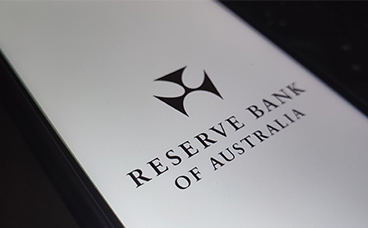Investment Watch: Summer 2026 Outlook
Investment Watch is a quarterly publication delivering insights into equity strategy and economic trends. The Summer 2026 edition explores global and Australian growth outlooks, structural shifts in asset allocation, and highlights opportunities across AI, resources, property, and income strategies to help investors navigate volatility and prosper in the year ahead.
Investment Watch is a quarterly publication produced by Morgans that delves into key insights for equity and economic strategy.
This publication covers
Economics - 'The Australian economy: a landscape of challenge and opportunity'
Asset Allocation - 'Structural shifts demand a portfolio rethink'
Equity Strategy - 'Diversification is key'
Banks - 'Fundamentals don't justify share price strength'
Industrials - 'Prepared for the uptick'
Travel - 'Selective opportunities'
Resources and Energy - 'Steady China and tight supply'
Consumer discretionary - 'Recovery underway'
Healthcare - 'Attractive, but with limited opportunities'
Infrastructure - 'Rising cost of capital but resilient operations'
Property - 'Structural tailwinds building'
It’s hard to believe that 2025 is already drawing to a close. As we enter the holiday season, we want to take a moment to express our deepest gratitude for your continued support and trust. This trust is the very foundation of everything we do. This time of year is a chance to reflect on the significant progress we’ve made. The entire team at Morgans is incredibly proud of the efforts and achievements from the past twelve months that reinforce our commitment to providing you with top-tier advice and opportunities. These achievements mean that Morgans continues to provide top-line advice and investment opportunities that benefit clients across our national branch network.
Morgans clients receive exclusive insights such as access to our latest Investment Watch publication. Contact us today to begin your journey with Morgans.
Key Takeaways
- Press pause. Park funds safely while you confirm what you received, obligations, and any tax implications.
- Build a plan that fits your goals and timeframes. Prioritise cash buffers, debt decisions, investing, super, and estate wishes.
- Get advice early. A financial adviser and tax accountant can help you avoid costly mistakes and set up a long-term strategy.
- Use professional inheritance financial advice to align tax, super, investing, and estate planning decisions.
Receiving a large inheritance can be life-changing. It can also feel overwhelming. The right first steps help you protect capital, make clear decisions, and turn a windfall into lasting financial security. This guide walks you through a practical process Morgans advisers use with clients every day, with a focus on inheritance financial advice tailored to Australian rules.
Step 1: Pause and assess your situation
Before making big choices, slow down.
- List the assets you have inherited: cash, property, superannuation, shares, term deposits, insurance proceeds, or a business interest.
- Confirm control and timing. Has probate been granted? Are there executor timelines or sale constraints?
- Check any liabilities. Some assets may come with debts, fees, rates, or ongoing costs.
- Gather documents. Will, probate, estate distribution statement, title records, super death-benefit statements, cost-base records for property and shares.
Short term, consider holding funds in high-interest savings or term deposits while you complete the groundwork. ASIC’s Moneysmart has clear tips on handling large amounts of money.
Step 2: Understand the emotional impact
An inheritance often follows the loss of a loved one. It is normal to feel pressure to act quickly. Give yourself time.
- Avoid large purchases until you have a plan.
- Set simple rules. For example, no irreversible decisions for 30 to 90 days.
- Write down your goals and values. What will this money do for you, your family, or future generations?
- If you feel rushed by offers or schemes, step back and check for red flags. Scamwatch has practical guidance.
Step 3: Map your goals and timeframes
Your strategy should mirror when you will need the money.
- 0 to 2 years (short term): capital protection and liquidity. Cash, term deposits, or an offset account.
- 3 to 7 years (medium term): a diversified mix of income and growth.
- 7 years plus (long term): growth-focused assets with disciplined risk management.
Align each dollar with a job: emergency fund, debt choices, home or investment property plans, children’s education, retirement savings, or charitable giving.
Step 4: Tax and rules to consider
Australia has no inheritance or estate tax. You can still face tax on income or gains from inherited assets. Seek written advice before selling or restructuring.
- Property. Capital Gains Tax (CGT) can apply when you sell. A main-residence exemption may be available in some cases and there is a two-year timing rule, with possible extensions in limited circumstances. The ATO has more information on extensions to the 2-year ownership period.
- Shares and managed funds. You usually inherit the deceased’s cost base. Future gains or income may be taxable in your hands.
- Superannuation death benefits. Tax depends on your relationship to the deceased and the components of the benefit. ATO guidance explains who counts as a dependant and how tax is applied.
- Pension and benefits. A large inheritance can affect Centrelink assessments under the income and assets tests. Check how your position may change.
Step 5: Build a financial strategy
This is where professional inheritance financial advice makes a clear difference. A tailored strategy can help you:
- Preserve capital while generating reliable income.
- Create an optimised tax position.
- Invest based on your risk profile and timeframes.
- Plan for retirement or intergenerational goals.
Common strategies include:
- Diversified portfolios. Combine cash, fixed income, Australian and global shares, property, and alternatives.
- Superannuation contributions. Use concessional and non-concessional contributions where appropriate, subject to caps and personal circumstances.
- Debt reduction or offset use. Compare the after-tax, after-fee return from investing with the guaranteed saving from reducing non-deductible debt.
- Property investment. Weigh cash flow, rates, maintenance, tenancy risk, and diversification.
- Philanthropy. Structured giving can align with your values and tax planning.
Step 6: Make considered debt decisions
A lump sum tempts quick mortgage paydowns or new borrowing. Test options with advice.
- Offset first. Parking cash in an offset account can cut interest while keeping flexibility.
- Compare outcomes. Paying down non-deductible debt is often strong, but do not drain all liquidity.
- Avoid new lifestyle debt. Large purchases can wait until your plan is set.
Step 7: Invest with discipline
Good portfolios are simple, diversified, and low friction.
- Use broad market building blocks supported by high-quality research.
- Keep fees and taxes in focus.
- Rebalance periodically to maintain your risk level.
- Document an investment policy statement you can stick to when markets move.
Step 8: Update your own estate plan
An inheritance is a prompt to review your legal documents.
- Update your will and enduring powers if your situation has changed.
- Review super nominations and life insurance beneficiaries.
- Consider a testamentary trust if suitable for family protection or flexibility.
Learn more about Estate Planning with a Morgans adviser.
Step 9: Avoid common mistakes
Many Australians make avoidable errors with inherited wealth, such as:
- Making large purchases without a plan
- Ignoring tax consequences when selling assets
- Failing to diversify or taking concentrated bets
- Chasing high returns promised by unlicensed operators
- Not seeking professional advice early enough
Use checklists, document your decisions, and keep a record of key statements and dates.
Step 10: Work with a Morgans financial adviser
Every inheritance is unique, and so is your financial journey. A Morgans adviser can help you:
- Clarify goals, timelines, and trade-offs
- Model debt vs invest decisions
- Design a diversified portfolio to suit your risk profile
- Coordinate with your accountant and solicitor on tax and estate matters
- Set up a review rhythm so your plan stays on track
Contact us today for a free consultation with a Morgans adviser. Let us help you turn your inheritance into long-term financial security.
Learn more with our superannuation advice, financial planning, retirement and estate planning.
Frequently asked questions
1) Do I pay tax on inherited money in Australia?
There is no inheritance or estate tax. You may still pay tax on income or gains from inherited assets. CGT can apply if you sell property or shares you inherited. Tax may apply to some superannuation death-benefit payments depending on your relationship to the deceased and the components of the benefit.
2) Should I pay off my home loan or invest the inheritance?
It depends on interest rates, risk tolerance, cash flow, and timeframes. Many clients park funds in an offset account first, then decide with advice. Compare the saving from reducing non-deductible debt with the expected after-tax return from investing. A written plan helps you commit to the path you choose.
3) What if I inherit a house?
Decide whether to live in it, rent it, or sell. Each option has different tax, cost, and lifestyle impacts. Keep records of valuations, costs, and dates. Speak to your adviser and tax specialist before you sign a contract. ATO guidance covers CGT rules and timing, including the two-year rule and limited extension grounds.
4) Who should I talk to first?
Start with a licensed financial adviser and a tax accountant. If property or complex structures are involved, engage a solicitor. Your financial adviser can coordinate the team and build a step-by-step plan.
Beware the US Shutdown!
Beginning on the 1st of October 2025, the US government began its current Federal government shutdown.
The shutdown occurred because Democratic Party Senators refused to support a Continuing Resolution to provide funding for the US government. At the time of writing, Republican Senators have now put up Continuing Resolutions for funding to the Senate 11 times, and Democrat Senators have refused to support them 11 times.
The more I look at this shutdown, the more it is apparent that Democratic planning for the shutdown really began in July, following the passage of the One Big Beautiful Bill.
A good start to understanding the Democratic Party’s decisions can be gained by reading a paper published on 22 July by University of California Berkeley Public Health Professor William H. Dow. The paper is titled “What do looming cuts to Medicaid really mean?”
Although the article is about Medicaid, Dow briefly mentions the expiry of subsidies to the Affordable Care Act (Obamacare insurance). Dow downplays this as a cause of the shutdown. We cover this issue in an appendix.
Berkeley is particularly interesting because it's in California’s 12th Congressional District. This was one of the long-time districts held by Nancy Pelosi, who resigned as Speaker of the House at the beginning of 2023. So it's really Democratic Party heartland.
In this paper, Professor Dow argued that the One Big Beautiful Bill signed into law by Trump on the 4th of July 2025 cuts funding to Medicaid by $100 billion per year. The source document he uses was published by the Kaiser Family Foundation.
When I looked at the source document, it actually says $99 billion per year. Dow rounded it up. We'll draw some analysis from that source document later. For now, we’ll say the cut is $99 billion a year, over the next ten years, continuously.
Medicaid is intended to provide basic health care for the poor. It’s funded by the federal government, but services are provided at the state level. In every state, the agency has a different name. The Congressional Budget Office tells us that in 2023, the total cost of Medicaid was $870 billion.
That means spending on Medicaid is equal to or greater than the GDP of around 170 countries. Only about 20 countries have a larger GDP than the annual US spending on Medicaid.
When we look at that spending, American seniors and disabled people were 21% of enrollees but accounted for 52% of the spending. Children were 37% of enrollees but only 15% of the spending. Professor Dow’s paper shows that Medicaid is important, particularly for understanding the politics around what he calls “Undocumented Immigrants.”
We’ll talk later about Speaker of the House Mike Johnson’s discussion of the same group. He calls them “Illegal Aliens.”
This is interesting. I’ve seen polling about the use of these terms. Roughly twice as many Americans use the phrase “illegal aliens” as use “undocumented immigrant”. But “undocumented immigrant” is heavily used in Democratic Party heartland, especially in California, where Professor Dow is based, and in New York State.
Again, Medicaid is intended to provide basic health care for the poor. The program is federally funded but state-administered. Speaker Mike Johnson, speaking on the 1st of October, said that “Medicaid was intended for people in distress, young pregnant women or men who were down on their luck, the destitute and disabled, and the elderly.”
The sources of the savings in Medicaid spending when the bill was passed on the 4th of July came from two areas: identification of recipients as American citizens, and the use of a “work test”.
Republicans tried to reduce benefits to American citizens only. That’s what they’re attempting to do.
Democrats, on the other hand, would like benefits to continue to be extended, officially or unofficially, to illegal aliens or undocumented immigrants.
Let’s talk about “The identification of American citizens”.
This involves people receiving benefits, or the adults in the family, turning up once a year at the state agency and identifying themselves in person. Earlier analysis by DOGE showed a number of invalid claims in Medicaid and other federal benefits.
There were people receiving benefits who had been dead for years, and others who had yet to be born. So Republicans included a condition in the bill that recipients must turn up at the agency once a year and prove they are American citizens.
That would exclude illegal aliens from receiving payments.
There’s also a work test for people receiving medical benefits. If you’re between 19 and 64 years of age and want to receive Medicaid benefits, you must prove you’re working at least 80 hours per month or attending an educational institution for that period.
When the bill became law, it was said these provisions would reduce Medicaid spending by 15%.
Professor Dow based his paper on research from the Kaiser Family Foundation. I examined the same document. It says the reduction is $99 billion a year. As a percentage of the total $870 billion spending, that’s exactly 11.4%, not 15%.
Still, the apparent intent of the Democratic Party is to continue the shutdown until these savings are reversed.
The previous experience of a shutdown was during Trump’s first term. Trump himself shut down a spending bill until it included funding for the border wall. That shutdown lasted 35 days. The result was that Trump’s favourability ratings fell dramatically.
So I think Democrats started this shutdown assuming the same would happen again, that Trump would be blamed, and it would be a political advantage to have a long shutdown.
Unfortunately for them, recent polling by Rasmussen suggests Trump is rating well.
There was a “No Kings” national protest aimed at Trump held on the 18th of October in all 50 states. This shutdown appears to have been planned to coincide with those demonstrations.
This suggests Democrats planned this as a long-term shutdown.
So what could possibly go wrong?
First up, China is using the US shutdown to launch aggressive demands for control of world trade in return for rare earths.
From an economic point of view, a paper published by Standard & Poor’s titled “The rising risk of a prolonged shutdown” is worth noting. The previous longest shutdown was 35 days, or five weeks.
It’s quite possible this one will go longer. The paper calculates that each two weeks of shutdown reduces final quarter GDP by 0.3%. We believe the shutdown will last at least four weeks. That would reduce fourth quarter GDP growth from the current estimate of 2% annualised to 1.4%.
The long-term bond market appears to believe this. In recent weeks, 10-year bond yields have fallen by 10 basis points. I think there’s more to come.
This shutdown may continue for a while. It’s good advice to exercise caution and wait until the shutdown ends. This story still needs time to unfold.
Investment Watch is a quarterly publication produced by Morgans that delves into key insights for equity and economic strategy.
This publication covers
Economics - 'A comparative outlook on the Fed and RBA'
Asset Allocation - 'Countering uncertainty'
Equity Strategy - 'Broadening our portfolio exposure'
Banks - 'Price strength compresses potential returns'
Industrials - 'Wild swings'
Resources and Energy - 'Sentiment turning'
Technology - 'Buy quality when opportunities arise'
Consumer Discretionary - 'Encouraging medium-term signs'
Telco - 'Defensive attributes remain attractive'
Infrastructure - 'Attractive, but with limited opportunities'
Property - 'An improving cycle'
Recent Intiations
As we approach Q4, we maintain our positive view on investment markets, grounded in the expectation of slowing but still positive global growth. The shift in market dynamics is driven by the resumption of US Fed rate cuts and the continued acceleration of tech innovation and productivity gains. We think these factors will mitigate the impact of ongoing economic challenges and geopolitical volatility. This quarter, we map the outlook for interest rates and how this shapes our asset allocation decisions. We also provide an outlook for the key sectors of the Australian market and where we see the best tactical opportunities
Morgans clients receive exclusive insights such as access to our latest Investment Watch publication. Contact us today to begin your journey with Morgans.
Each quarter, the Australian Financial Review conducts a comprehensive survey involving 39 economists who provide forecasts on key indicators such as GDP, the Australian dollar, the cash rate, and core inflation. Over the past two years, the AFR has also ranked these economists based on the statistical accuracy of their predictions. I have been fortunate to be included in the top ten for both years.
In this article, I will share my own views on the economic outlook, as published in the AFR survey, alongside insights from two other top-ten contributors. One represents a major bank and the other a leading financial institution.
Starting with GDP, my forecast for 2025 is 1.7 percent growth. This matches the major bank’s projection. The financial institution is slightly more optimistic, forecasting 1.8 percent. These figures suggest a broadly consistent view of modest growth.
By mid-2026, growth is expected to pick up. I am slightly more conservative than the others, forecasting 1.9 percent for the year to June. For the year to December 2026, I anticipate growth of 2 percent, while the bank and institution forecast 2.2 and 2.3 percent respectively.
This divergence in growth estimates likely reflects differing views on productivity. In the first quarter of this year, most GDP growth came from the public sector, resulting in very low productivity growth of just 0.30 percent. As growth shifts toward the private sector, productivity should improve. However, I expect less private-sector-driven growth, which informs my more cautious forecast. I also anticipate that employment growth will be driven more by Federal government spending and public sector hiring.
Turning to the Australian dollar, I hold a more optimistic view than the other two contributors. I forecast the dollar to reach 68 US cents by the end of this year and 70 US cents by mid-next year. The major bank expects 67 US cents and then 68 US cents, while the institution forecasts 67 US cents and 69 US cents. My outlook on the Australian dollar is based on the belief that Australia’s rate cuts are nearing completion, while the United States is just beginning its rate-cut cycle.
I have previously stated that the Federal Reserve funds rate could fall to 3.35 percent, assuming it stops at neutral. However, if the U.S. economy weakens, which is likely in a midterm election year, the Fed may cut rates more aggressively. Additionally, the inflationary impact of tariffs is expected to fade next year, leading to a significant drop in U.S. inflation by mid-2026. This could prompt the Fed to cut rates below neutral, weakening the U.S. dollar and strengthening the Australian dollar.
Six months ago, I was asked whether it was worth hedging the Australian dollar. At the time, I said no, as I expected more rate cuts in Australia than in the U.S. Now, with Australia’s rate cuts coming to an end and the U.S. just beginning, it is an opportune time to consider hedging the Australian dollar against the U.S. dollar.
Regarding the cash rate, I expect trimmed mean inflation to fall to 2.5 percent in the ABS estimate for the CPI released on 29 October. If this occurs, the Reserve Bank of Australia could cut the cash rate once more to 3.35 percent by year-end. If inflation does not fall, rates are likely to remain unchanged.
Interestingly, the major bank expects rates to fall not only in December but again by June next year. The financial institution sees no cut this year but expects rates to fall to 3.35 percent by mid-next year. Again, Australia is nearing the end of its rate-cut cycle, while the U.S. is just beginning its own rate cut cycle.
On inflation, I believe the RBA can only cut rates if quarterly inflation falls to 2.5 percent. I forecast this inflation number by December and again by mid-next year. The major bank expects core inflation to be 2.6 percent in both periods, which I believe is too high to justify rate cuts. The institution forecasts 2.9 percent inflation by year-end and 2.7 percent by mid-next year, which also seems inconsistent with a rate-cut scenario. These differences highlight varying interpretations of inflation data.
I have previously noted that the RBA places greater emphasis on the quarterly trimmed mean than the monthly CPI. Governor Michelle Bullock confirmed this in her recent media briefing, stating that while the RBA is transitioning to monthly CPI, it will continue to request quarterly trimmed mean data. This is because the quarterly measure provides a more accurate reflection of services inflation. While monthly CPI may be published, the quarterly trimmed mean will remain central to the RBA’s decisions on the cash rate.

In our previous discussion on the Fed, we suggested that the deterioration in the US labour market would move the Fed toward an easing path. We have now seen the Fed cut rates by 25 basis points at the September meeting. As a result, the effective Fed funds rate has fallen from 4.35% to 4.10%.
Our model of the Fed funds rate suggests that the effective rate should move toward 3.35%. At this level, the model indicates that monetary policy would be neutral.
The Summary of Economic Projections from Federal Reserve members and Fed Presidents also suggests that the Fed funds rate will fall to a similar level of 3.4% in 2026.
We believe this will happen by the end of the first quarter of 2026. In fact, the Summary of Economic Projections expects an effective rate of 3.6% by the end of 2025.
The challenge remains the gradually weakening US labour market, with unemployment expected to rise from 4.3% now to 4.5% by the end of 2025. This is then projected to fall very slowly to 4.4% by the end of 2026 and 4.3% by the end of 2027.
These expectations would suggest one of the least eventful economic cycles in recent history. We should be so lucky!
In the short term, it is likely that the Fed will cut the effective funds rate to 3.4% by March 2026.
This move to a neutral stance will have a significant effect on the world trade cycle and on commodities. The US dollar remains the principal currency for financing trade in the Indo-Pacific. Lower US short-term rates will likely generate a recovery in the trade of manufacturing exports in the Indo-Pacific region, which in turn will increase demand for commodities.
The Fed’s move to a neutral monetary policy will generate benefits well beyond the US.
Just as an introduction to what I'm going to talk about in terms of Australian interest rates today, we'll talk a little bit about the trimmed mean, which is what the RBA targets. The trimmed mean was invented by the Dallas Fed and the Cleveland Fed. What it does is knock out the 8% of crazy high numbers and the 8% of crazy low numbers.
That's the trimming at both ends. So the number you get as a result of the trimmed mean is pretty much the right way of doing it. It gets you to where the prices of most things are and where inflation is. That’s important to understand what's been happening in inflation.
With that, we've seen data published for the month of July and published in the month of August, which we'll talk about in a moment. Back in our remarks on the 14th of August, we said that the RBA would not cut in September. That was at a time when the market thought there would be a September return. But we thought they would wait until November. So with the RBA leaving the cash rate unchanged on the 30th of September, is it still possible for a cut in November?
The RBA released its statement on 30th September, and that noted that recent data, while partial and volatile, suggests that inflation in the September quarter may be higher than expected at the time of the August Statement on Monetary Policy. So what are they talking about? What are they thinking about when they say that? Well, it could be that they’re thinking about the very sharp increases in electricity prices in the July and August monthly CPIs.
In the August monthly CPI, even with electricity prices rising by a stunning 24.6% for the year to August faster than the 13.6% for the year to July; the trimmed mean still fell from 2.7% in the year to July to 2.6% in the year to August. Now, a similar decline in September would take that annual inflation down to 2.5%.
The September quarter CPI will be released on the 29th of October. Should it show a trimmed mean of 2.5% or lower, then we think that the RBA should provide a rate cut in November. This would provide cheer for homeowners as we move towards the festive season. Still, it all depends on what we learn from the quarterly CPI on the 29th of October.













